Mark Cavendish's £1,000 socks the tip of the iceberg in quest for 35th Tour de France stage win
From aero bottles to mid-ride tyre swaps, Mark Cavendish turned to tech to help with 'Project 35'
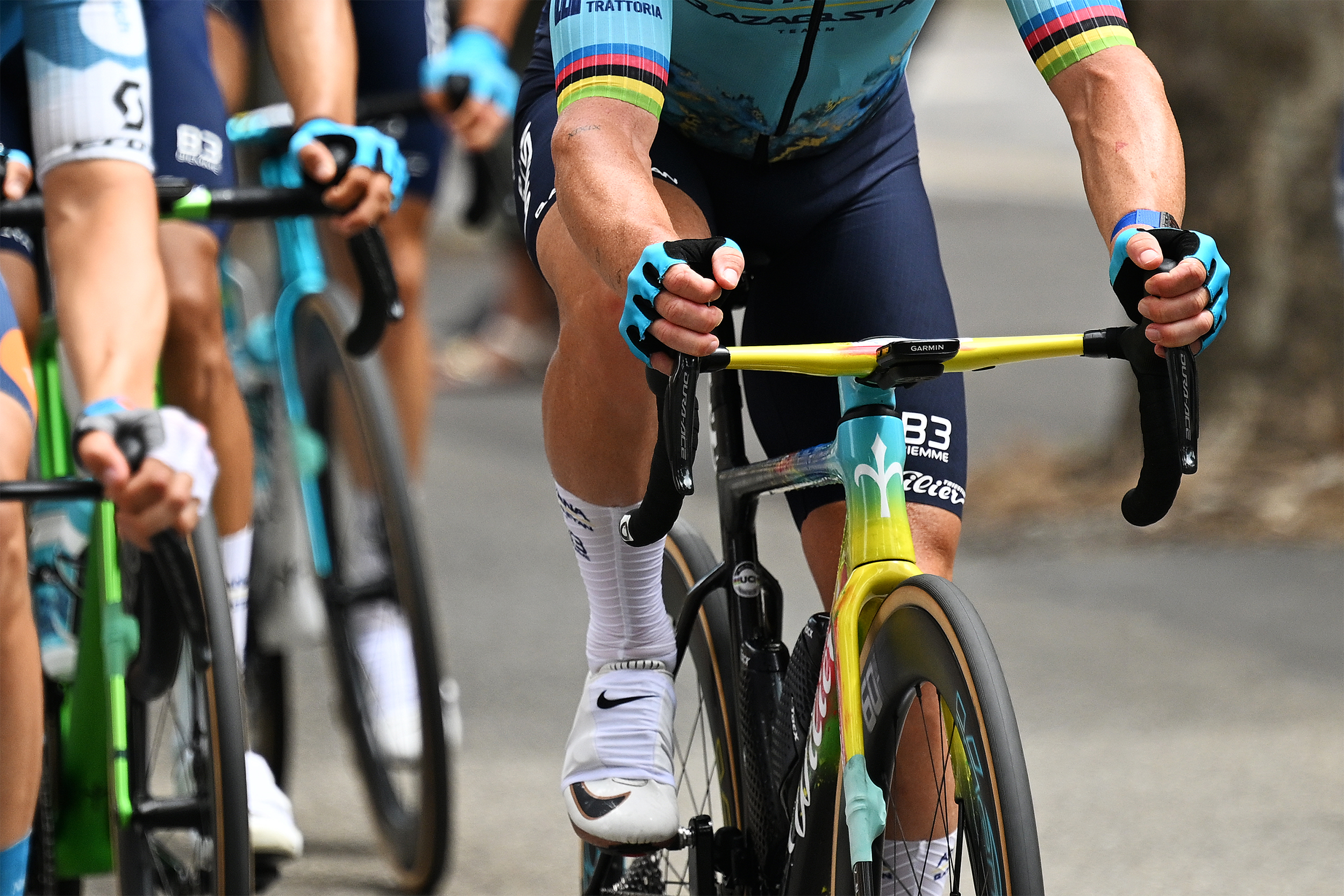
Mark Cavendish has broken the record for the most Tour de France stage wins of all time, winning his 35th stage in fantastic fashion to Saint Vulbas on Wednesday.
But going back to stage 1 of this year's Tour de France, it didn't look so clear-cut.
"Project 35 is still alive!" was the phrase shouted in the direction of the Briton at the end of of that stage. He had just suffered a torturous day in the heat. He ultimately finished the day comfortably inside the time cut, and so his hopes to win a record-breaking 35th stage of the Tour de France remained alive, but it didn't look so clear cut when he was dropped on the first climb of the day, before vomiting as a result of the effort combined with the need to consume so much water to remain hydrated.
Despite the French fairytale unfolding at the front of the race, in which Romain Bardet stormed into the yellow jersey in his farewell Tour alongside DSM teammate Frank van den Broek, for every eye watching the front of the race was another on Cavendish's fight at the back.
Up until this point, I'd not heard the term 'Project 35' but true to Baader-Meinhof phenomenon form, I've seen and heard it everywhere since. Whether or not Cavendish himself uses the term himself is unknown, but it's clear he'd left no stone unturned in the pursuit of the next win.
His bike, the Wilier Filante SLR aero bike resplendent in custom colours, has donned aerodynamic bottles from a time trial bike and on stage 3 - the first opportunity that ultimately was halted by a crash - his Nike shoes were enshrouded in a fabric sleeve to smooth out the airflow over the Boa dials, but that was just the beginning.
The Manxman is no stranger to tech hacks in the pursuit of victory. When he won the World Road Championships in 2011, he employed an add-on shell to the top of his Specialized helmet, closing off the vents to make it more aerodynamic. That was ultimately the origin of the aero road helmet as we know it today, and the UCI subsequently banned the addition of removable covers in racing, something that Intermarché-Wanty are still grappling with at this year's race.
Get The Leadout Newsletter
The latest race content, interviews, features, reviews and expert buying guides, direct to your inbox!
But now that the record is broken, we've run through a handful of clever tricks, hacks and optimisations used by the British rider and his Astana-Qazaqstan team.
Let's take a look at what he changed.
Time trial bottles
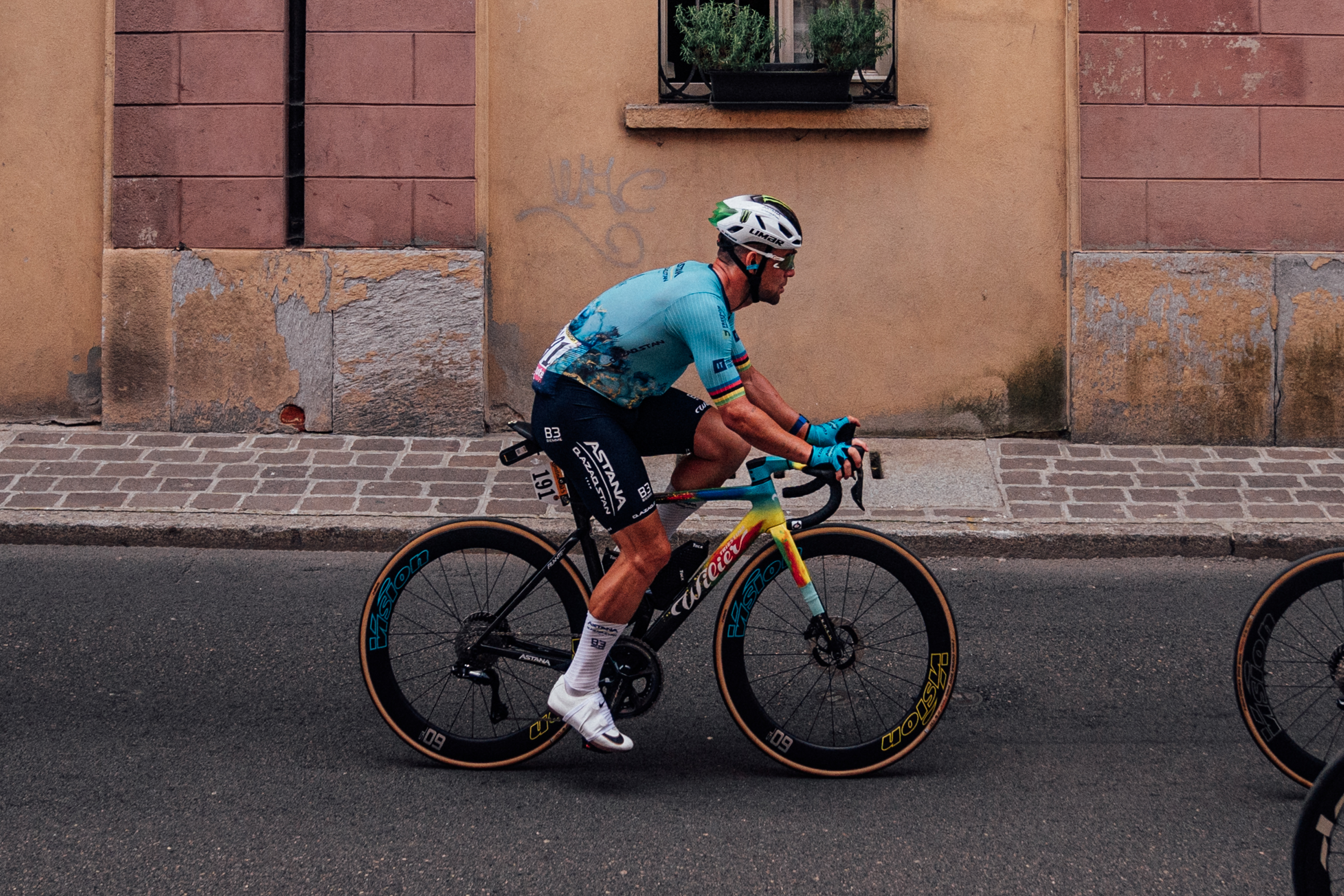
Starting with the obvious one from stage 3: The bottles. So much attention goes into shaping the carbon tubes of bikes these days to eke out marginal aero improvements, but then we slap on a round bottle and call it done. Over the years, brands have toyed with optimising these. Campagnolo did it years ago, but it's a common sight on time trial bikes these days.
The simply-titled Aero Bottle & Cage from Tacx is the choice employed here. They're narrower than a traditional round bottle, slightly deeper, and better fill the space inside the frame triangle. Exactly how much faster they are is unknown, but both aero specialists Aerocoach and Swiss Side agree that aero bottles are faster.
Mid-stage tyre changes
A DOUBLE wheel change for @markcavendish... let's hope they're the winning kind! 🤔3️⃣5️⃣TDF 2024 | @SBS @SBSOnDemand | June 29 – July 21#sbstdf #couchpeloton #TDF2024 pic.twitter.com/zMhDYf2CRsJuly 1, 2024
Another notable spot on stage 3 was Cavendish's decision to swap both his front and rear wheels at the same time at 88km to go.
It wasn't clear exactly why the change was made. He didn't have a double puncture, and the new wheels appeared to be the same depth as those removed, so the next logical conclusion is that he swapped to faster tyres.
Vittoria makes the Corsa Pro tyre, which Cavendish's Astana-Qazaqstan team use, in multiple different variants. The standard Corsa Pro is the everyday race tyre, while the Corsa Pro Speed is a lighter weight, slightly faster tyre for time trials and sprints. It could be that he intentionally ran the standard Pro tyre for the early part of the race, using its increased puncture resistance, and then swapped to the Pro Speed to gain the extra speed in the final.

Shoe covers and expensive socks
On stage three, enshrouding Cavendish's white Nike shoes, as well as the shoes of his entire team, were small fabric sleeves.
Working similarly to aero overshoes, these sleeves smooth out the airflow as it passes over the otherwise-not-very-aero Boa dials. We believe they are made by British brand NoPinz and are called the 'Hypersonic Tovershoes'.
While not a common product, we've seen them before. The Specialized Sub-6 road shoe launched back in 2015, was a lace-up shoe that came with a 'Warp Sleeve', although that performed the dual duty of keeping the laces tidy and smoothing out the airflow.
Given the high temperatures we've seen in the Tour so far, it's unsurprising that he didn't just go for full aero overshoes, given temperature regulation is also an important factor in performance.
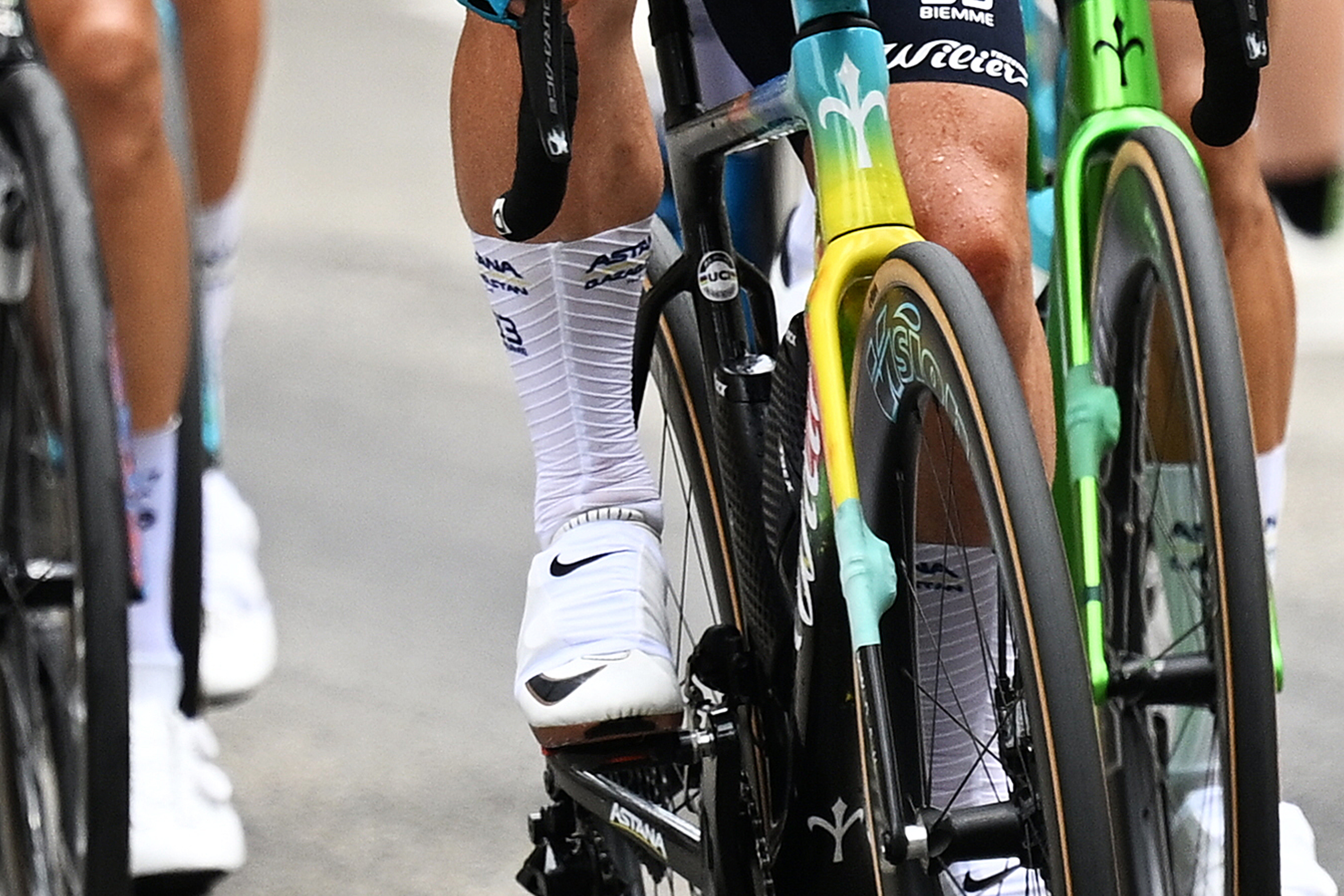
Next up, socks, and for something so seemingly insignificant, it appears Cavendish has gone big.
With their v-shaped aero chevrons up the front, we've worked out that these are also from NoPinz, and are the 'P35 Socks'. They are fully custom-made, and according to the website, they're priced at one pence shy of £1000. It wouldn't be the first time we've seen socks fetch such a high price, but we've contacted NoPinz to confirm this is correct.
The NoPinz website says they were "designed by champions for champions," adding that they were "crafted for a groundbreaking project." I think we can all guess what that project is, and indeed what P35 stands for.
Notably, however, on stage 5, he swapped them out for another pair, the exact model of which is currently unknown.
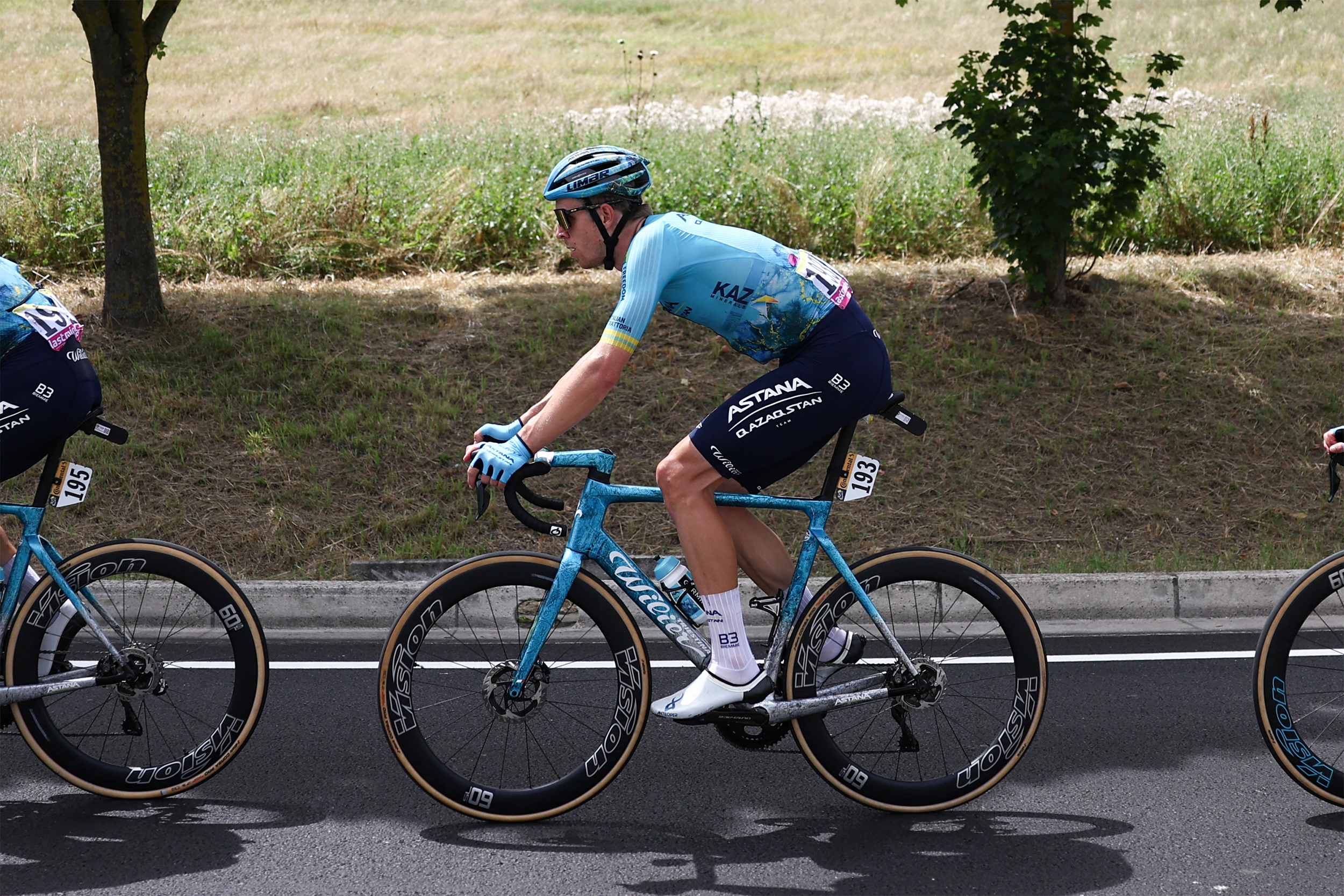
Cees Bol's custom shoes
Speaking of expensive footwear, one of Cavendish's leadout men, Cees Bol, has been sporting a pair of custom-made aero shoes. They come from a brand called Antiloper, and they're so niche that price is available only on application.
The retention dial is hidden out of the airflow on the heel, and they look to be made almost entirely from carbon fibre. It's not the first time Bol has used these shoes though. He actually had them at the Tour last year too.
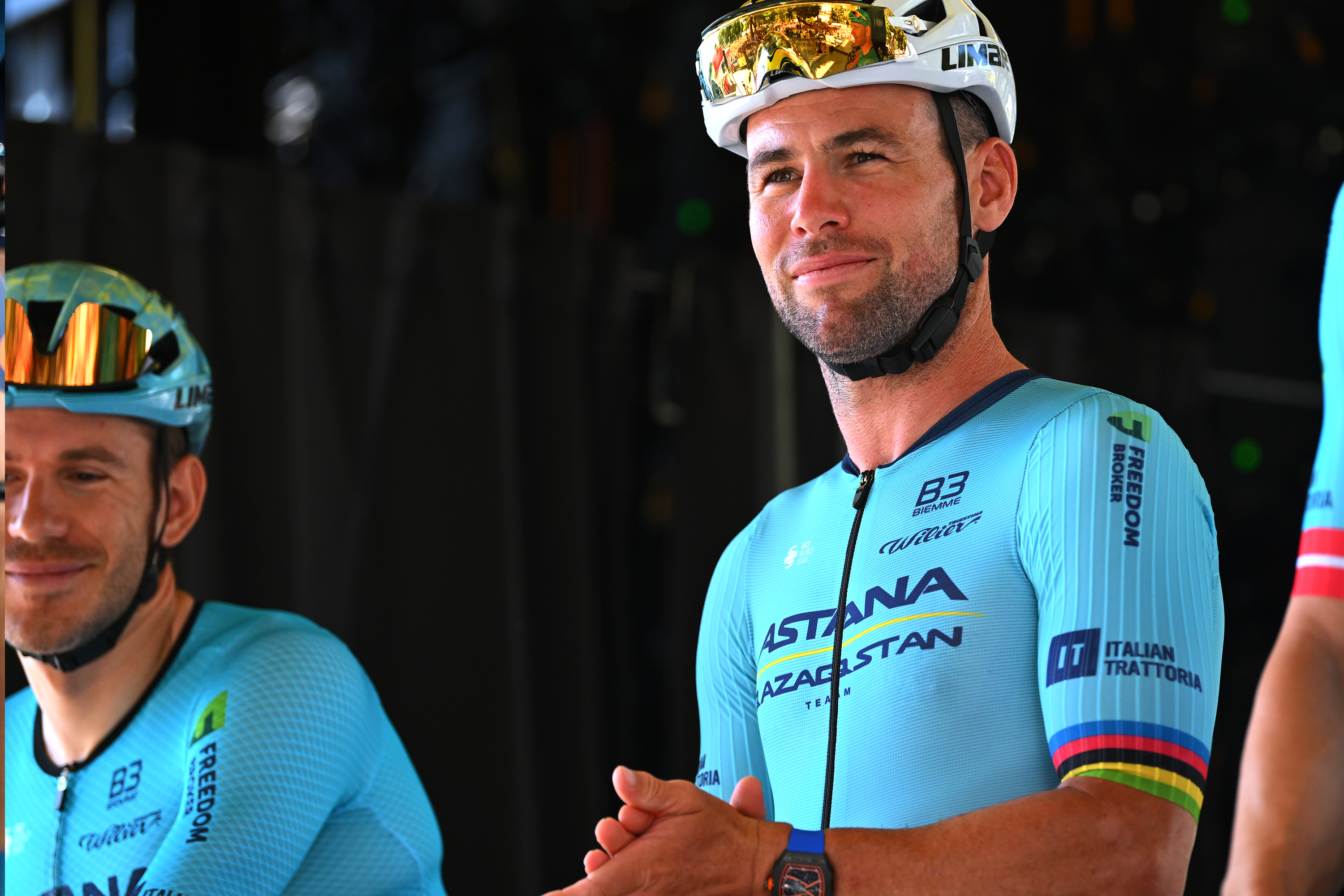
A variety of skinsuits
Back to Cavendish himself, and the next aero optimisation we've found comes courtesy of his skinsuit, although there's some complication here.
On stage 3, he was wearing a skinsuit with aerodynamic trip lines down the sleeves. Not all of his teammates are wearing the same skinsuit, as evidenced in the photo above, but most were. The trip-strips on the sleeves are said to be more aerodynamic, but the exact difference is unknown.
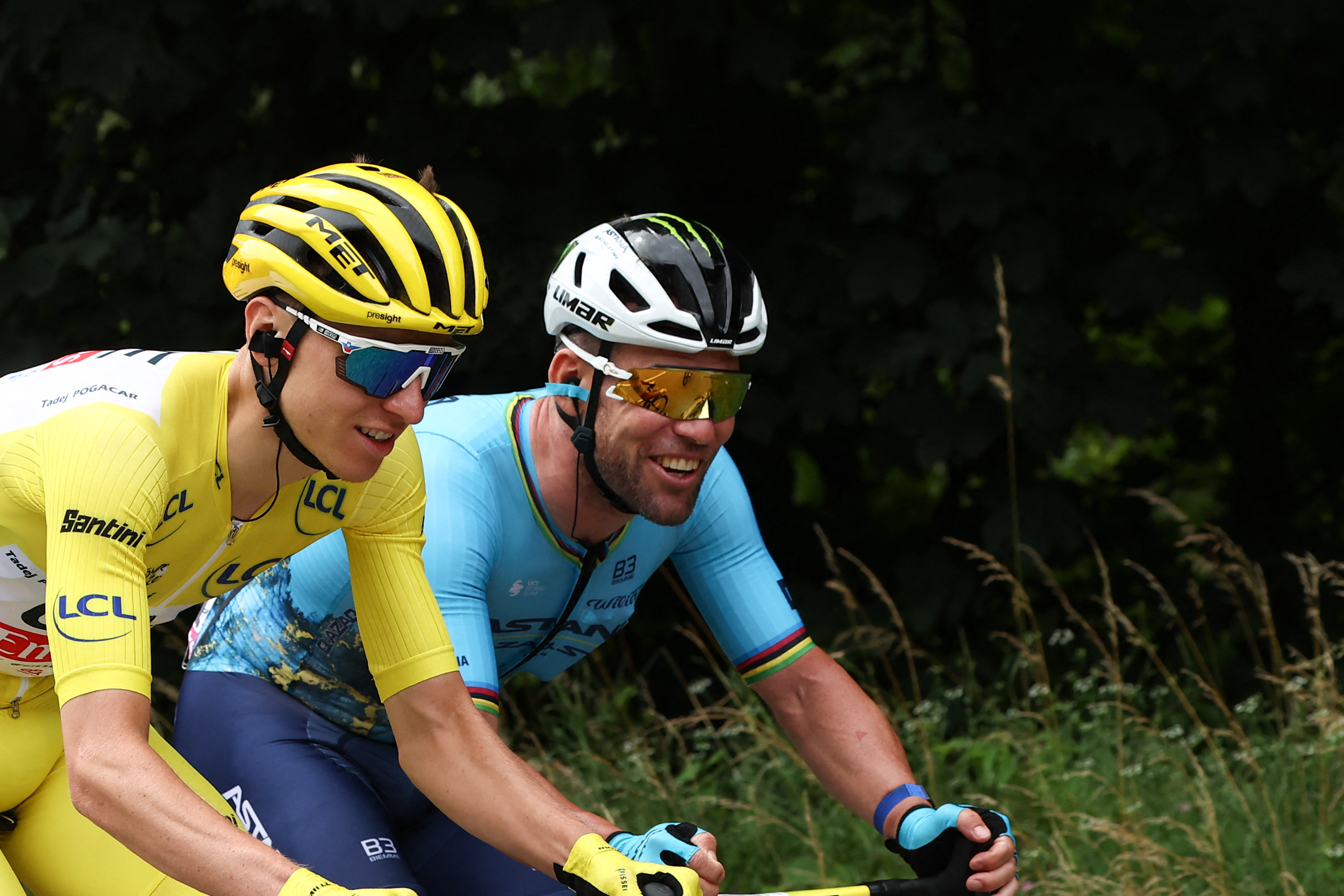
Fast forward to stage 5 and Cavendish was in a different skinsuit with smooth sleeves, but with what looks like an aero base layer beneath. The reason for the change is unknown, but it could simply be a comfort thing, or perhaps related to heat.
He also ditched the shoe covers for the race's fifth stage.

Radio positioning
The final hack we've spotted is the position of Cavendish's radio. Most riders will put it in a pocket stitched onto the inside of the back of the jersey, but a blocky protrusion on a rider's back is quite an un-aerodynamic shape.
Instead, Cavendish has put it on his chest, something time triallists have begun doing in recent years for an aero benefit, so we can only assume the Briton's motivations are the same.

Josh is Associate Editor of Cyclingnews – leading our content on the best bikes, kit and the latest breaking tech stories from the pro peloton. He has been with us since the summer of 2019 and throughout that time he's covered everything from buyer's guides and deals to the latest tech news and reviews.
On the bike, Josh has been riding and racing for over 15 years. He started out racing cross country in his teens back when 26-inch wheels and triple chainsets were still mainstream, but he found favour in road racing in his early 20s, racing at a local and national level for Somerset-based Team Tor 2000. These days he rides indoors for convenience and fitness, and outdoors for fun on road, gravel, 'cross and cross-country bikes, the latter usually with his two dogs in tow.